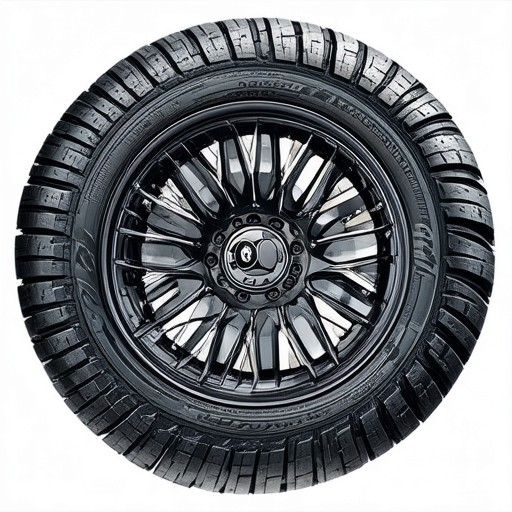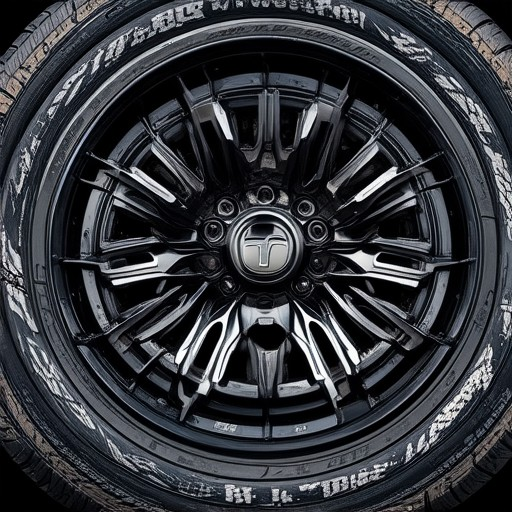Selecting the right tire tread is one of the most critical decisions you can make for your vehicle’s safety, performance, and longevity. Whether you’re a casual driver or someone who relies on their car for work, having well-maintained tires with adequate tread is essential. In this comprehensive guide, we’ll walk you through everything you need to know about how to select tire tread, ensuring your vehicle operates safely and efficiently under various conditions. From understanding what tire tread is and its importance to measuring tread depth accurately, we’ll cover all the essential factors that influence tread selection. By the end of this guide, you’ll feel confident in choosing the best tire tread for your needs, whether you’re tackling daily commutes or embarking on longer journeys.
Key Takeaways
- Understand the Importance of Tread Depth: Safe levels (1/32–2/32″) ensure traction and stability.
- Match Tires to Your Driving Environment: Choose summer, winter, or all-season tires accordingly.
- Evaluate Tread Patterns for Efficiency and Safety: V-shape for snow, smooth for low noise.
- Consider Aspect Ratio and Suspension Setup: Lower ratios for better handling, taller for added protection.
- Select the Appropriate Rubber Compound: Tailor to climate conditions for optimal performance.
- Ensure Adequate Load Capacity: Check tire size and sidewall thickness for carrying weight.
- Review Professional Recommendations: Experts can provide tailored advice for your vehicle and usage.
- Balance Cost and Performance: Find the best value without compromising on safety or durability.

How to Determine Tread Wear on Tires
To evaluate the tread depth of your tires, follow these organized steps:
Step 1: Insert a Penny
Place a penny into the tread grooves of one of your tires. Position the penny with Abraham Lincoln’s head facing downward. If the penny sits completely flat or tilts to the side, it indicates that the tread is worn down and may need attention.
Step 2: Use a Tread Depth Gauge
For a more precise measurement, utilize a tread depth gauge tool. These tools are typically available at auto parts stores or online marketplaces. Insert the gauge into the tread groove and measure the depth according to the manufacturer’s instructions. Most modern vehicles recommend replacing tires when the tread reaches 1/32 of an inch (approximately 0.32 cm), as indicated by the gauge.
Step 3: Inspect for Uneven Wear Patterns
Examine the tires for uneven wear. Drive forward slowly and look for areas where the tread appears worn differently from the rest of the tire. This could indicate issues with suspension alignment, braking systems, or driving habits. Addressing these can help extend the life of your tires.
Step 4: Check for Cracks or Bulges
Inspect the tires for any visible cracks, splits, or bulges. These damages can lead to rapid tread wear and potential blowouts. Consider replacing the affected tire immediately if you notice any signs of damage.
Step 5: Consider Driving Conditions
Think about how you drive. Aggressive driving, frequent highway speeds, or off-road usage can cause quicker tread wear. Adjusting your driving habits or upgrading to high-performance tires may help prolong tire life.
Step 6: Replace Tires When Necessary
Refer to your vehicle’s owner manual for specific recommendations regarding tire replacement. Most manufacturers suggest replacing tires when the tread depth falls below the specified minimum level, usually indicated by a tread wear indicator on the tire itself.
Tips for Maintaining Healthy Tires
- Maintain proper inflation levels to distribute weight evenly across the tires.
- Rotate tires periodically to ensure even wear and maximize tread life.
- Inspect tires regularly as part of your routine maintenance schedule.
By following these steps and tips, you can effectively monitor and maintain your tires’ condition, ensuring optimal performance and safety on the road.
Tire Tread Depth: Is 7/32 Good or Bad?
Tire tread depth is measured in 32nds of an inch, with 6/32 being the generally accepted minimum safe tread depth. A reading of 7/32 indicates that your tires still have decent traction, though it’s closer to the lower end of the recommended range.
If you notice that your tires consistently measure at 7/32, it’s advisable to monitor them closely. Consider factors like driving conditions, usage frequency, and road quality. If you drive often on rough surfaces or encounter frequent potholes, 7/32 may not be sufficient for long-term durability and safety.
Inspect your tires regularly for signs of uneven wear, cracks, or bulges. These can indicate underlying issues that may affect performance. Replace your tires if you notice a significant drop in tread depth or if they appear worn out prematurely.
Remember, while 7/32 is technically acceptable, it’s wise to err on the side of caution and replace your tires before they become a liability on the road.

Is it safe to drive on a 2/32 tread?
Driving on a 2/32 tread depth is generally considered unsafe due to reduced traction, longer stopping distances, and increased risk of hydroplaning during wet conditions. Most safety guidelines recommend a minimum tread depth of 4/32″ for optimal performance, though 2/32″ may still be usable in dry conditions temporarily.
For better safety and performance, consider the following tips:
- Check your tire tread depth regularly using a tread depth gauge.
- Rotate your tires every 6,000 to 12,000 miles to ensure even wear.
- Consider upgrading to winter tires if you frequently encounter icy or wet roads.
- Inspect your tires for any signs of uneven wear, cracks, or punctures before driving.
For more information on tire maintenance and safety, visit our Tire Maintenance Guide or explore our selection of Custom Wheels .

Tire Tread Depth: What You Need to Know
The optimal tire tread depth is crucial for maintaining safety and performance. To check your tire tread, place a penny into the tread groove. If the penny rests flush with the groove, your treads are at the recommended minimum depth. This ensures adequate traction and braking performance. If the penny sinks in, your treads are too worn and need replacement.
For passenger vehicles, the safe zone typically falls between 1/32 to 2/32 inches of tread depth. This is equivalent to approximately 4.3 mm. Ensuring your tires meet this standard helps reduce the risk of skidding and improves overall driving stability.
Regularly inspecting your tire treads using the penny method is a simple yet effective way to monitor tread life. Combine this with professional inspections during routine maintenance to keep your vehicle safe on the road.
How to Choose the Best Tire Tread for Optimal Performance
Choosing the ideal tire tread for optimal performance involves evaluating several key factors to ensure your vehicle operates safely and efficiently under various conditions. Here’s a step-by-step guide to making the best choice:
- Tire Type: Select a tire type suited for your driving conditions. Summer tires excel in warm weather, winter tires perform best in cold climates, and all-season tires offer balanced performance year-round. For off-road or high-performance needs, specialized tires are recommended.
- Tread Depth: Opt for sufficient tread depth for better traction, especially on uneven surfaces. However, avoid excessive depth to prevent rapid wear on smooth roads.
- Aspect Ratio: A lower aspect ratio improves handling and reduces the risk of rolling over, while a taller aspect ratio offers better protection against road hazards. Choose based on your vehicle’s suspension setup and driving style.
- Rubber Compound: Select a compound that suits your local climate. Hot-climate compounds enhance grip, while cold-climate compounds improve durability in colder conditions.
- Vehicle Weight and Load: Ensure the tire can handle your vehicle’s weight and any additional load, such as trailers or cargo. Thicker sidewalls are better for heavy loads.
- Suspension Setup: Consider your vehicle’s suspension. Stiffer suspensions may benefit from more aggressive treads, while softer setups can pair well with smoother treads for a comfortable ride.
For tailored recommendations, visit Incubus Wheels to explore their custom wheel designs and performance-focused options. Competitors like Nitroshane and Toyo Tires also offer high-performance solutions worth considering.

Tire Tread Selection Factors
- Tread Depth: Assess the remaining tread depth to ensure adequate traction and safety. A deeper tread is better for off-road conditions, while shallower treads are sufficient for highway use.
- Tread Pattern: Choose a tread pattern suited to your driving conditions. V-shaped patterns excel in snow and mud, while smooth patterns reduce noise for highway driving.
- Tire Size: Select the appropriate size based on your vehicle’s load capacity and performance requirements. Larger tires may offer better stability but could impact fuel efficiency.
- Vehicle Type: Consider your vehicle’s intended use. Passenger tires are optimized for everyday driving, while specialty tires are designed for off-roading or racing applications.
- Durability and Environmental Needs: Opt for tires rated for extreme temperatures or harsh conditions if you frequently drive in such environments. Check for eco-friendly options if sustainability is important to you.
- Budget: Balance cost with performance. Higher-end tires may last longer or perform better, but mid-range options often provide excellent value for most drivers.
When evaluating tire treads, prioritize factors that align with your driving habits and local conditions. Always consult professional recommendations or trusted reviews to make an informed decision.




0 Comments